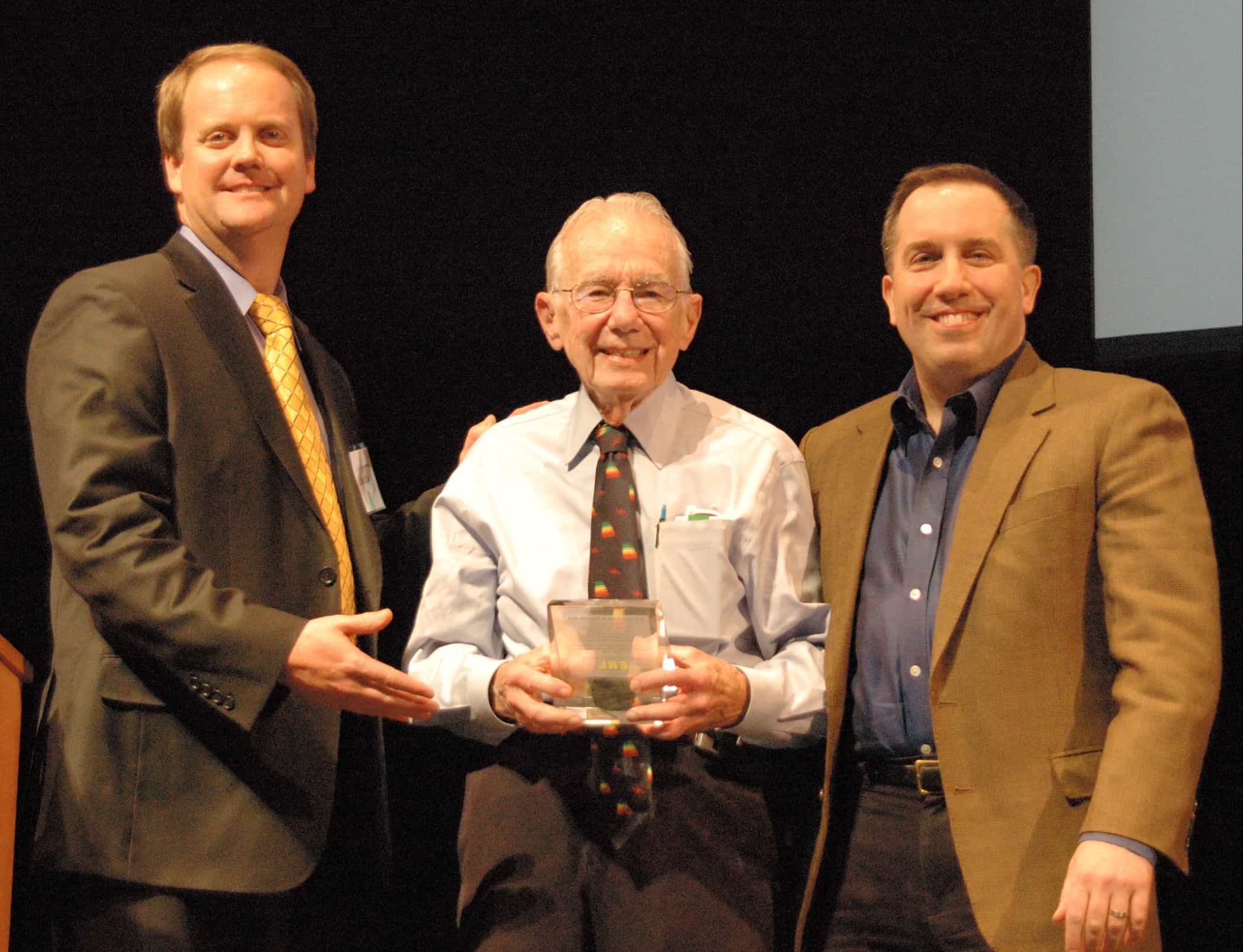By Michael Banks

Chris Calwell (left) and Jonathan Koomey (right) present Arthur Rosenfeld (centre) with an award for his contribution to energy efficiency (the award has a 100 picorosenfeld piece of coal inside) credit: Adam Gottlieb.
When PhysicsWorld readers were asked to supply their favourite units last year we were inundated with mentions of “barns”, “sheds” and even “Ox-days”, which measures the amount of land a farmer can plough using an ox.
Now say hello to another unit — the Rosenfeld.
The unit is named after Arthur Rosenfeld, a former particle physicist who moved into energy efficiency research.
Physicists from the Lawrence Berkeley National Laboratory and Stanford University have proposed the unit as a measure of carbon reduction and energy saving.
It is defined as the energy saved over a year from not operating an average 500 MW coal plant running at 70% capacity, or saving three billion kilowatt-hours per year, which is equivalent to saving three million metric tons of carbon-dioxide per year.
The researchers, who have published their results in Environmental Research Letters, say it is easier for people to “visualize” the number of power plants that don’t need to be built through efficiency savings rather than just the number of kilowatt-hours saved.
The proposal for the Rosenfeld will be launched today in a symposium on the next generation of energy efficiency, which is being held at the Robert and Margrit Mondavi Center for the Performing Arts.


